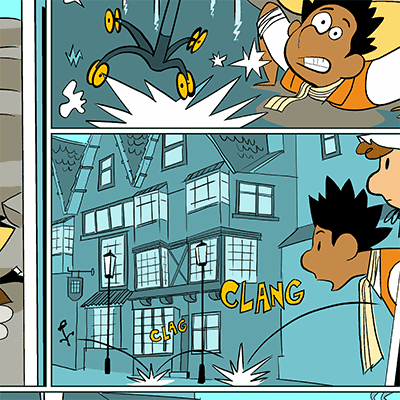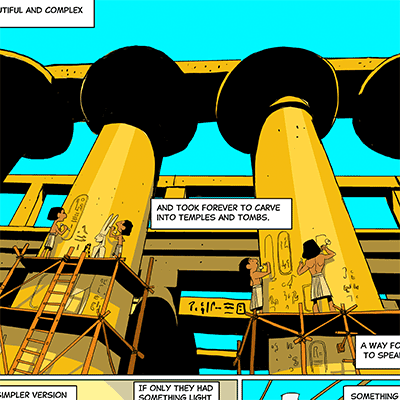What is the reading-writing connection?
There is a close relationship between the skills and understandings required for successful reading and those required for writing. Learning to write supports learning to read, and vice versa.
Concepts about Print in Reading and Writing
Concepts about print are basic understandings about how written language and books “work.” There are clear links between development of concepts about print in reading and development of early understandings about writing. For instance:
- As children learn that written words in books convey a message, they also learn that writing is a tool to convey ideas, stories, and needs.
- As children build alphabet knowledge of letter names and letter sounds, they also learn how to write letter symbols.
- As children build concept of word and sentence knowledge, they also learn that writers leave spaces between words, and that writing words in meaningful sequence creates sentences that communicate ideas.
Phonics in Reading and Writing
Phonics refers to the knowledge of how sounds are represented by individual letters or groups of letters. Early writing supports the development and practice of early phonics skills used to read. For instance:
- Early attempts at writing strengthen children’s understanding of the alphabetic principle—the understanding that each letter represents a certain sound or sounds. For instance, a child might write “M” because he knows his name starts with M, or “C” because he knows C makes the /c/ sound that he hears at the beginning of “cat.”
- When children use “invented spelling,” in which they attempt write words by recording letters for the sounds they hear, they practice both segmenting a word into individual sounds, and blending those sounds back together to create the word. Segmenting and blending are also key processes in decoding words in reading.
Comprehension and Writing
Reading and writing are both integral to thinking and learning. They remain intertwined as students become proficient in both areas. For instance:
- Students often learn and retain content best when they both read and write about it. For instance, reading informational text and stories about China, and writing questions, facts learned, and reflections on how life in China compares to one’s own life can all contribute to a student’s learning.
- Reading provides a model for writing. For instance, students might note the features of realistic fiction stories as they read and use those observations to help when writing their own narratives.
- Reading and writing both help students build their vocabulary. When students use vocabulary words in writing, it can help solidify their understanding of them when they encounter them in books and vice versa.
Activity
Use a favorite book to help children better appreciate the reading-writing connection. Adapt the prompts you use to fit a child’s age and needs. Here’s what to do:
- Choose a favorite book.
- Discuss “Who is the author?” If possible, view a photograph or video clip of the author to concretely highlight his or her existence as a real person!
- Imagine what the author did to write the book. Think about both content development and actual word writing. For instance, ask:
- “How do you think the author got the idea for this book?”
- “What do you think the author’s plan was as s/he got ready to write it?”
- “Let’s pretend you’re the author and want to write [a prominent word from the book.] What sounds did the author hear in [word]? What letters did s/he write to put those sounds on paper?”
- Why do you think the author chose to use this word and not another one? (For instance, “hollered” instead of “said.”) Or, “Why do you think the author wrote [interesting phrase] rather than [more boring version of the same information?]”
- Make plans to incorporate something the author did into a child’s own written work. For instance:
- Preschool: Staple blank pages together so a child can “be an author like ______.” Have children draw the pictures and dictate a story across the pages, or support invented spelling of some words if a child is ready.
- Elementary school and beyond: Have children mark admirable features of the favorite book with sticky notes. (Examples: interesting vocabulary, humor, captivating facts or plot twists, etc.) Encourage them to refer to those sticky notes to inspire their own writing.




